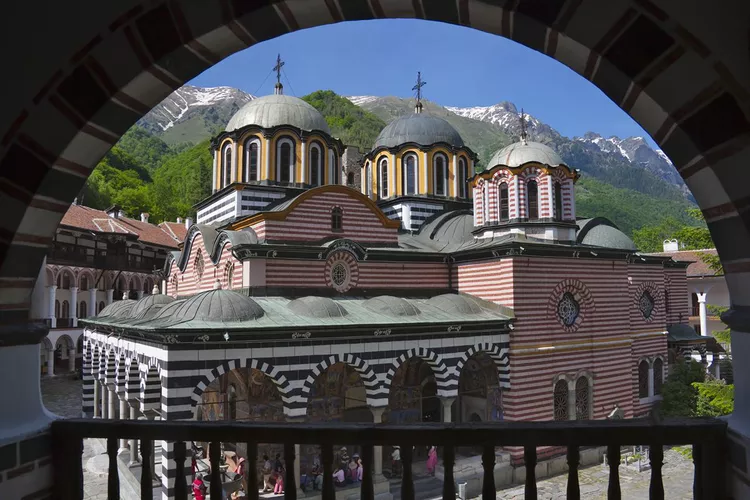Bulgaria is a country gradually becoming known to travelers, particularly those looking for a budget destination. From the inland cities to mountain monasteries to the Black Sea Coast, Bulgaria is rich in history and culture that will be apparent to any visitor. Whether you’re considering making Bulgaria part of your travel plans in the near future or have already secured your tickets to this country in Southeastern Europe, learning more about Bulgaria, including basic facts, will enrich your experience.
Basic Bulgaria Facts
Population: 7,576,751
Location: Bulgaria borders five countries and the Black Sea to the East. The Danube River creates the longest border between Bulgaria and Romania. Its other neighbors include Turkey, Greece, Serbia, and the Republic of Macedonia.
Capital: Sofia (София) – Population: 1,263,884
Currency: Lev (BGN)
Time Zone: Eastern European Time (EET) and Eastern European Summer Time (EEST) in summer.
Calling Code: +359
Internet TLD: .bg
Language and Alphabet: Bulgarian is a Slavic language with unique features, such as suffixed indefinite articles and the absence of verb infinitives. A notable topic among Bulgarians is the contention that Macedonian is a dialect of Bulgarian, making both languages mutually intelligible. Furthermore, the Cyrillic alphabet, developed in Bulgaria during the 10th century, became the third official alphabet of the European Union after Bulgaria’s accession. Consequently, travelers familiar with Russian or other Slavic languages that use Cyrillic will find communication easier in Bulgaria.
Religion: The majority religion typically aligns with ethnicity in Bulgaria. Almost ninety-four percent of Bulgarians are ethnic Slavs, with 82.6 percent adhering to the Bulgarian Orthodox Church, the traditional religion of the country. Islam, mainly practiced among ethnic Turks, constitutes the largest minority religion.

Bulgaria Travel Facts
Visa Information: Citizens from the US, Canada, UK, and most European countries do not require a visa for visits under 90 days.
Airport: Most travelers will arrive at Sofia Airport (SOF), located 3.1 miles east of central Sofia. Shuttle bus #30 connects to the city center, while buses #84 and #384 connect to the Mladost 1 Metro Station.
Trains: Night trains equipped with sleeper cars connect the Central Railway Station Sofia (Централна железопътна гара София) with numerous other cities. Although the trains are older, they maintain a reputation for safety, allowing travelers to expect a pleasant journey. However, passengers traveling between Turkey and Sofia should prepare for a customs check at the border, requiring an early wake-up.
Culture and History Facts
History: Bulgaria has existed since the 7th century, functioning as an empire for seven centuries until it succumbed to Ottoman rule for 500 years. Following its liberation, Bulgaria embraced communism and is now a parliamentary democracy and a member of the European Union.
Culture: The cultural identity of Bulgaria encompasses a wide array of traditions. Bulgarian folk costumes are frequently showcased during national holidays and festivals. In March, the Martenitsa tradition commemorates Baba Marta, heralding spring with colorful twine charms.
The culinary landscape of Bulgaria reflects influences from neighboring regions as well as the 500 years of Ottoman presence. Traditional Bulgarian dishes can be savored throughout the year, particularly during festive events like Christmas.
Moreover, Bulgarian souvenirs such as pottery, wood carvings, and natural beauty products often reflect unique regional characteristics, making them delightful keepsakes for visitors.





